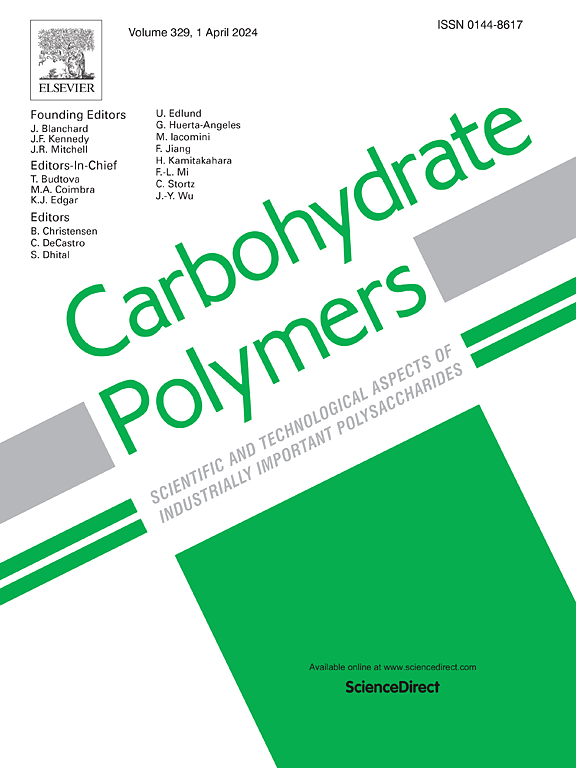Synthesis of polysaccharide-based block copolymers obtained by click chemistry from opened β-cyclodextrin and growth polymerization
IF 10.7
1区 化学
Q1 CHEMISTRY, APPLIED
引用次数: 0
Abstract
The synthesis of well-defined oligosaccharides via cyclodextrin (CD) ring opening is an efficient method for obtaining tailored monomers, which are then suitable for further polymerization. Starting from benzoylated β-CD, which contains seven glucose units, pure difunctionalized benzoylated heptaoses were synthesized. This approach produced heptaoligosaccharides with either azide (A) or propargyl (B) as reactive groups at the reducing and non-reducing ends with a yield between 81 and 96 %, and corresponding to α,ω-diazidoheptaose, α,ω-dipropargylheptaose, and ω-azido-α-propargylheptaose for the AA, BB, and AB monomers, respectively. A highly efficient deprotection process provided access to difunctionalized linear and polar heptasaccharides with high purity (87–99 %). The newly synthesized oligosaccharidic blocks were then polymerized via copper-catalyzed 1,3-dipolar cycloaddition leading to seven original and distinct polymers. These include unprotected (AA-BB or AB-AB) or benzoylated (AB-AB) homo- and hetero-copolymers, as well as hydrophobic blocks randomly distributed with hydrophilic ones (AB-AB) or alternating unprotected-benzoylated blocks (AA-BB). Two additional polymers were obtained by quaternization of triazole rings. Characterization by SEC, TGA, XRD, NMR, and MALDI-TOF MS revealed that a mixture of polymers containing 1–34 blocks could be obtained, with a degree of polymerization ranging from 126 to 238 sugar units and moderate to excellent yields (30–85 %).

求助全文
约1分钟内获得全文
求助全文
来源期刊

Carbohydrate Polymers
化学-高分子科学
CiteScore
22.40
自引率
8.00%
发文量
1286
审稿时长
47 days
期刊介绍:
Carbohydrate Polymers stands as a prominent journal in the glycoscience field, dedicated to exploring and harnessing the potential of polysaccharides with applications spanning bioenergy, bioplastics, biomaterials, biorefining, chemistry, drug delivery, food, health, nanotechnology, packaging, paper, pharmaceuticals, medicine, oil recovery, textiles, tissue engineering, wood, and various aspects of glycoscience.
The journal emphasizes the central role of well-characterized carbohydrate polymers, highlighting their significance as the primary focus rather than a peripheral topic. Each paper must prominently feature at least one named carbohydrate polymer, evident in both citation and title, with a commitment to innovative research that advances scientific knowledge.
 求助内容:
求助内容: 应助结果提醒方式:
应助结果提醒方式:


